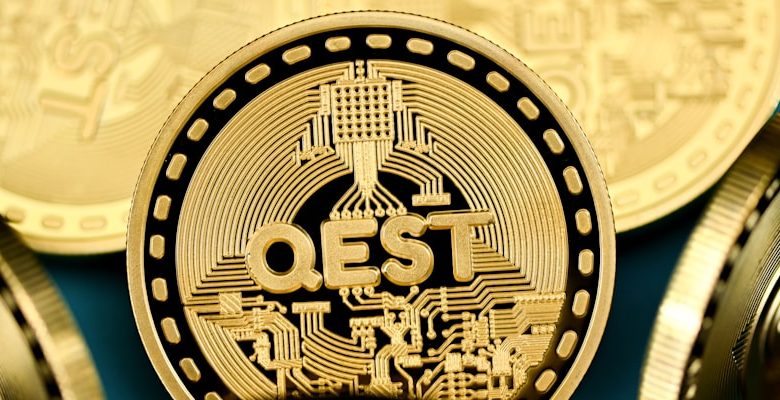Understanding DeFi: A Comprehensive Guide to Decentralized Finance

- The Rise of DeFi: Exploring the Evolution of Decentralized Finance
- Breaking Down the Basics: An Introduction to DeFi Concepts and Terminology
- Navigating DeFi Platforms: A Guide to the Top Decentralized Finance Protocols
- DeFi Risks and Rewards: Understanding the Opportunities and Challenges of Decentralized Finance
- Regulatory Considerations in DeFi: Examining the Legal Landscape of Decentralized Finance
- The Future of DeFi: Predictions and Trends for the Decentralized Finance Ecosystem
The Rise of DeFi: Exploring the Evolution of Decentralized Finance
Decentralized Finance (DeFi) has been gaining momentum in the world of cryptocurrency and blockchain technology. The rise of DeFi represents a significant shift in the traditional financial landscape, offering users the ability to engage in various financial activities without the need for intermediaries such as banks or brokers.
One of the key aspects of DeFi is its focus on decentralization, which means that financial transactions and services are conducted on a public blockchain network rather than through centralized institutions. This has the potential to increase transparency, reduce costs, and provide greater financial inclusion to individuals who may not have access to traditional banking services.
As the DeFi ecosystem continues to evolve, we are seeing the development of a wide range of decentralized applications (dApps) that offer services such as lending, borrowing, trading, and asset management. These dApps are built on smart contracts, self-executing contracts with the terms of the agreement directly written into code.
Furthermore, the growth of DeFi has led to the creation of decentralized exchanges (DEXs) that allow users to trade cryptocurrencies directly with one another without the need for a central authority. This opens up new possibilities for trading and liquidity provision in a trustless and permissionless manner.
Breaking Down the Basics: An Introduction to DeFi Concepts and Terminology
Decentralized Finance, or DeFi, is a rapidly growing sector within the cryptocurrency space that aims to recreate traditional financial systems using blockchain technology. For those new to DeFi, understanding the basic concepts and terminology is essential to navigating this exciting and innovative space.
Here are some key terms to help you get started:
- Smart Contracts: Self-executing contracts with the terms of the agreement directly written into code. They automate processes and remove the need for intermediaries.
- Liquidity: The ease with which an asset can be bought or sold without causing a significant change in its price. In DeFi, liquidity is crucial for efficient trading.
- Decentralized Exchanges (DEXs): Platforms that allow users to trade cryptocurrencies directly with one another without the need for a centralized intermediary.
- Yield Farming: The practice of staking or lending cryptocurrencies to earn rewards or interest. It involves providing liquidity to DeFi protocols in exchange for tokens.
As you delve deeper into the world of DeFi, you’ll encounter a myriad of other terms and concepts that may seem overwhelming at first. However, by mastering the basics and gradually expanding your knowledge, you’ll be well-equipped to participate in and benefit from the decentralized finance ecosystem.
Navigating DeFi Platforms: A Guide to the Top Decentralized Finance Protocols
When it comes to navigating DeFi platforms, it’s essential to understand the top decentralized finance protocols that are shaping the industry. These protocols play a crucial role in enabling various financial services to be conducted in a decentralized manner, without the need for traditional intermediaries.
One of the most popular DeFi protocols is Uniswap, which is a decentralized exchange (DEX) that allows users to trade various cryptocurrencies directly from their wallets. Uniswap utilizes automated market makers (AMMs) to facilitate trades, making it a user-friendly option for those looking to swap tokens without relying on a centralized exchange.
Another prominent DeFi protocol is Compound, a decentralized lending platform that enables users to borrow and lend cryptocurrencies without the need for a traditional financial institution. By utilizing smart contracts, Compound allows users to earn interest on their crypto holdings or borrow assets by providing collateral.
Aave is another DeFi protocol that offers lending and borrowing services, but with a unique twist. Aave utilizes a decentralized pool of funds to provide loans, allowing users to access liquidity without the need for a traditional lender. Additionally, Aave offers features such as flash loans, which enable users to borrow assets without providing collateral.
MakerDAO is a decentralized autonomous organization (DAO) that governs the stablecoin Dai. Dai is pegged to the US dollar through a system of collateralized debt positions (CDPs) and smart contracts. MakerDAO allows users to mint Dai by locking up collateral assets, providing stability in the volatile cryptocurrency market.
Overall, understanding these top DeFi protocols is essential for anyone looking to participate in decentralized finance. By familiarizing yourself with these platforms and how they operate, you can navigate the world of DeFi with confidence and take advantage of the innovative financial services they offer.
DeFi Risks and Rewards: Understanding the Opportunities and Challenges of Decentralized Finance
When it comes to decentralized finance (DeFi), there are both risks and rewards that investors should be aware of. Understanding the opportunities and challenges of DeFi is crucial for making informed decisions in this rapidly evolving financial landscape.
One of the main advantages of DeFi is the potential for high returns on investment. By participating in decentralized lending, borrowing, and trading, investors can earn significant profits compared to traditional financial systems. Additionally, DeFi allows for greater financial inclusivity, giving individuals around the world access to financial services without the need for a traditional bank account.
However, with great rewards come great risks. DeFi is still in its early stages, and as such, it is susceptible to hacks and vulnerabilities. Smart contract bugs, code exploits, and security breaches can all lead to substantial financial losses for investors. Additionally, the lack of regulation in the DeFi space means that there is limited recourse for investors who fall victim to fraudulent schemes or scams.
It is essential for investors to conduct thorough research and due diligence before participating in DeFi projects. By understanding the risks and rewards associated with decentralized finance, investors can make informed decisions that align with their risk tolerance and financial goals. While the potential for high returns is enticing, it is crucial to proceed with caution and be prepared for the inherent challenges of the DeFi landscape.
Regulatory Considerations in DeFi: Examining the Legal Landscape of Decentralized Finance
Regulatory considerations in decentralized finance (DeFi) are crucial in understanding the legal landscape of this emerging sector. As DeFi continues to gain traction, regulators around the world are closely monitoring its developments to ensure compliance with existing financial regulations.
One key aspect to consider is the issue of compliance with anti-money laundering (AML) and know your customer (KYC) regulations. DeFi platforms must find ways to implement these measures while still maintaining the decentralized nature of their operations. This presents a unique challenge that requires innovative solutions to strike a balance between regulatory requirements and the core principles of DeFi.
Another important consideration is the classification of DeFi tokens under securities laws. Regulators are scrutinizing whether certain tokens fall under the definition of securities and therefore must comply with securities regulations. This uncertainty has led to debates within the DeFi community on how to navigate these regulatory challenges without stifling innovation.
Moreover, tax implications of DeFi transactions are also a significant concern for regulators. The decentralized and borderless nature of DeFi platforms makes it challenging to track and tax transactions effectively. Regulators are exploring ways to enforce tax compliance within the DeFi space without hindering its growth potential.
Overall, navigating the regulatory landscape of DeFi requires a deep understanding of existing financial regulations and a willingness to adapt to new regulatory requirements as they emerge. By staying informed and engaging with regulators in a constructive manner, the DeFi community can help shape a regulatory framework that fosters innovation while ensuring consumer protection and market integrity.
The Future of DeFi: Predictions and Trends for the Decentralized Finance Ecosystem
The future of decentralized finance (DeFi) is promising as the ecosystem continues to evolve and expand. There are several predictions and trends that are expected to shape the DeFi landscape in the coming years.
- 1. Increased adoption: DeFi is gaining traction among both retail and institutional investors, leading to a surge in adoption. This trend is expected to continue as more people become aware of the benefits of decentralized finance.
- 2. Regulatory challenges: As DeFi grows in popularity, regulators around the world are taking notice and considering how to regulate this space. The regulatory environment is likely to become more complex as authorities seek to balance innovation with investor protection.
- 3. Interoperability: One of the key trends in DeFi is the focus on interoperability, allowing different protocols and platforms to work together seamlessly. This will enable users to access a wider range of financial services and products within the DeFi ecosystem.
- 4. Scalability solutions: Scalability has been a major issue for DeFi, with network congestion and high fees hindering its growth. However, there are several solutions in development, such as layer 2 scaling and sharding, that aim to address these challenges and improve the overall user experience.
- 5. Institutional involvement: Traditional financial institutions are starting to take an interest in DeFi, with some even exploring ways to incorporate decentralized finance into their existing services. This trend is likely to accelerate as DeFi becomes more mainstream.



